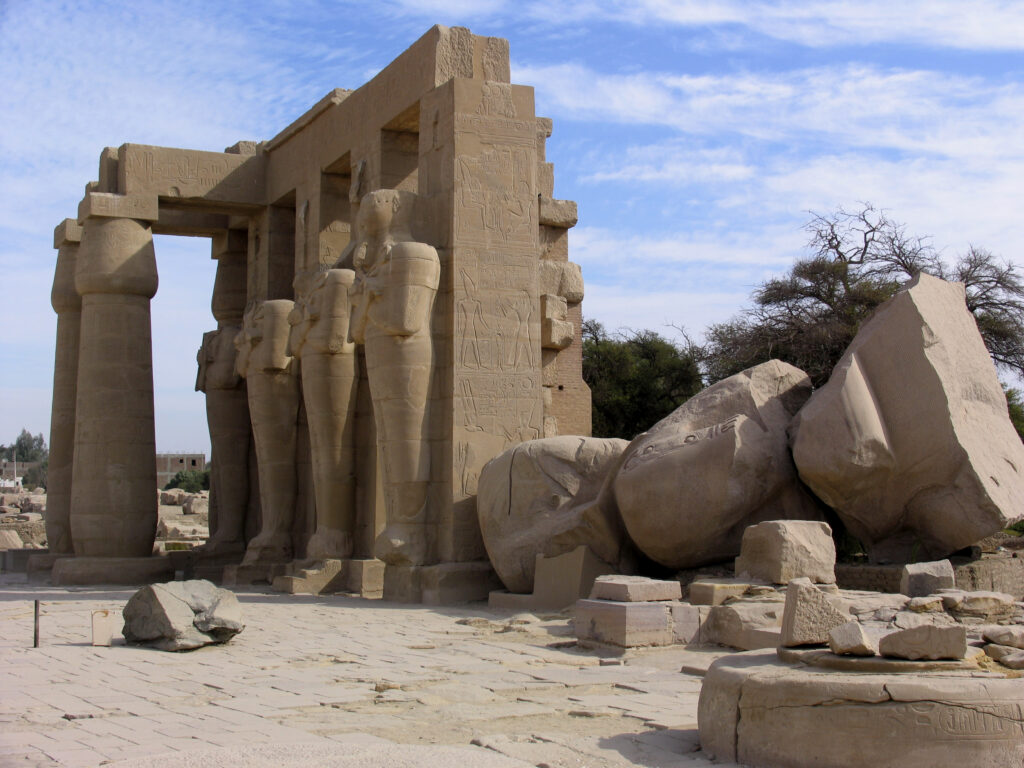Ramesseum: Marvel at the Majestic Ancient Tomb of Pharaoh Ramses II
For thousands of years, the beauty and grandeur of Egypt’s ancient culture has been a source of fascination and wonder. This is particularly true when it comes to the monuments and tombs left behind by the Pharaohs, whose rule and authority once stretched across the entire Nile Valley. One of the most iconic and impressive of these is the Ramesseum, the mortuary temple of Ramses II. Located on the west bank of the Nile just outside of Luxor, the Ramesseum is a must-see for anyone interested in Egypt’s incredible history.
What is the Ramesseum?
The Ramesseum is the mortuary temple of Ramses II, one of the most powerful Pharaohs to ever rule over ancient Egypt. Ramses II was the third pharaoh of the Nineteenth Dynasty and he reigned for an unprecedented 67 years. During his time in power, he was responsible for a great number of impressive architectural feats, including the enormous temple complex at Abu Simbel and the city of Pi-Ramesses in the eastern delta. The Ramesseum is one of Ramses II’s most impressive works and it stands as a testament to the magnitude of his power.
History of the Ramesseum
The Ramesseum was built around 1250 BC, during the height of Ramses II’s reign. It was originally constructed as a temple to the sun-god Ra, with Ramses II’s own name included in the name of the temple. The temple complex was designed to house a number of statues and monuments of the Pharaoh and his family, as well as a large hall where the Pharaoh’s funeral procession could take place. The temple complex also included a large pylon, which served as an entrance to the temple and was decorated with carvings and inscriptions.
What to See at the Ramesseum
Today, the Ramesseum is a shadow of its former glory. Many of the statues and monuments that once filled the complex have been destroyed by time and looting. However, there are still a number of impressive sights to be seen at the Ramesseum. One of the most impressive is the Great Hall of Columns, which is still largely intact and boasts a stunning array of columns and reliefs. Other highlights of the temple complex include the Colossi of Memnon, two massive statues of Ramses II that still stand guard at the temple’s entrance.
Visiting the Ramesseum
The Ramesseum is located just outside of Luxor on the west bank of the Nile. The temple is open daily from 8am to 4pm and admission is included with the entrance fee to the nearby Valley of the Kings. There are also a number of guided tours available of the Ramesseum, which offer a more in-depth look at the complex and its history.
Conclusion
The Ramesseum is a must-see for anyone interested in Egypt’s incredible history. Built by one of the most powerful Pharaohs to ever rule over ancient Egypt, the temple complex is a testament to the magnitude of Ramses II’s power. While many of the statues and monuments that once filled the complex have since been destroyed, there are still a number of impressive sights to be seen at the Ramesseum, including the Great Hall of Columns and the Colossi of Memnon. The Ramesseum is open daily and admission is included with the entrance fee to the nearby Valley of the Kings.

